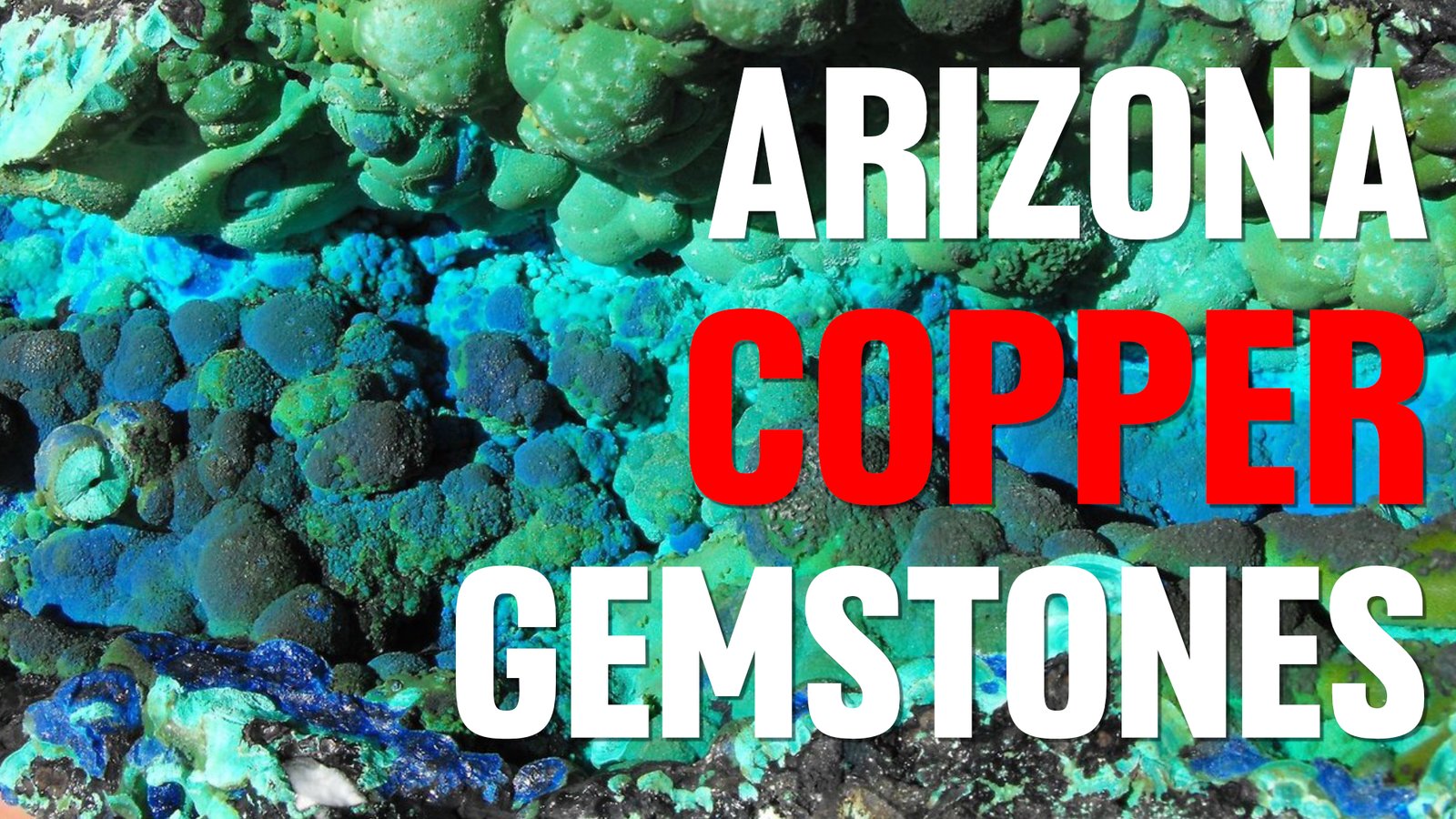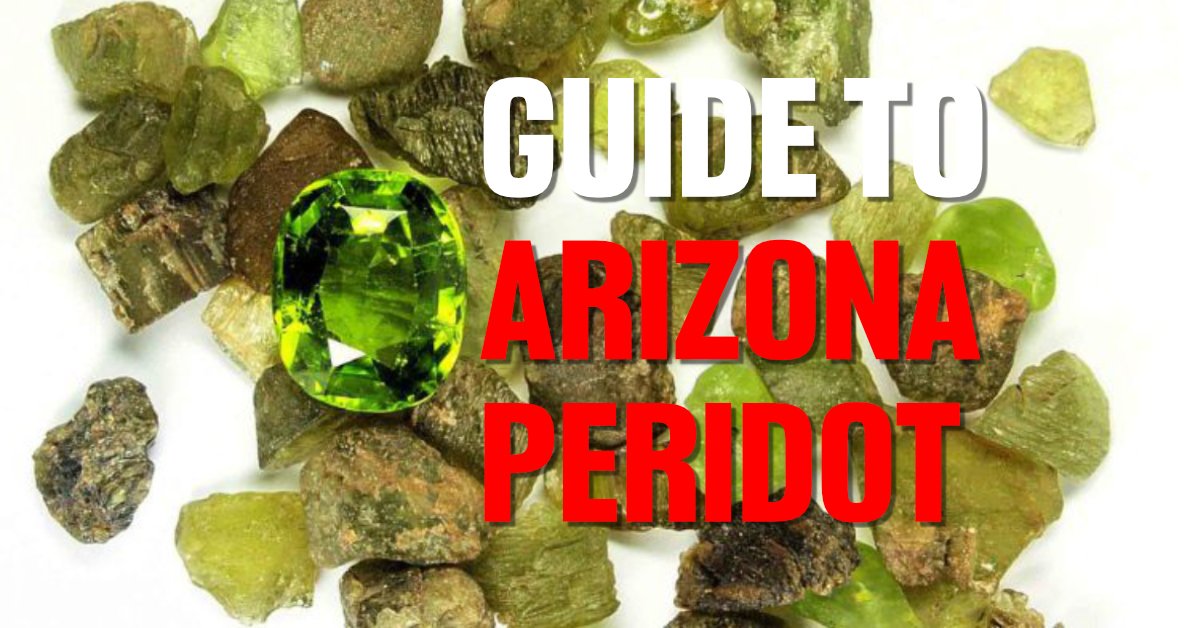Arizona is one of the most mineralized states in America and is a host to dazzling gemstones, crystals, precious metals, and even meteors.
Arizona's diverse landscapes contain a geological bounty for rockhounds and gem enthusiasts. From the red rocks of Sedona to the Sonoran desert, opportunities abound for exploration and prospecting.
The state's complex geology has created ideal conditions for many different gems and minerals to form in an array of colors and patterns, including turquoise, peridot, amethyst, and even fire agates. Combine the geology with the long history of mining and prospecting, and you are sure to find natural treasures of your own.
In this guide, I'll share my knowledge and research about the infamous gemstones of Arizona and their potential locations so you can plan your rockhound expedition better than ever!
How Minerals Formed Throughout Arizona
It is good to have a basic foundational understanding of Arizona's geological features before setting out on your hunt. The wondrous thing about Arizona is how many different kinds of terrains and climates there are all in one state. Many think that Arizona is one big dry desert, but much to my very own surprise, the state is ecologically and geologically diverse in so many ways, from dry deserts to lush forests and alpine terrain.
Much of northern Arizona consists of horizontal sedimentary layers of sandstone, limestone, and shale that date back over 200 million years when the area was flooded by oceans. As mineral-rich solutions filled the cracks of these rocky layers, agates, jaspers, and opals formed, including plume agates with iron oxide creating vibrant red and orange hues.
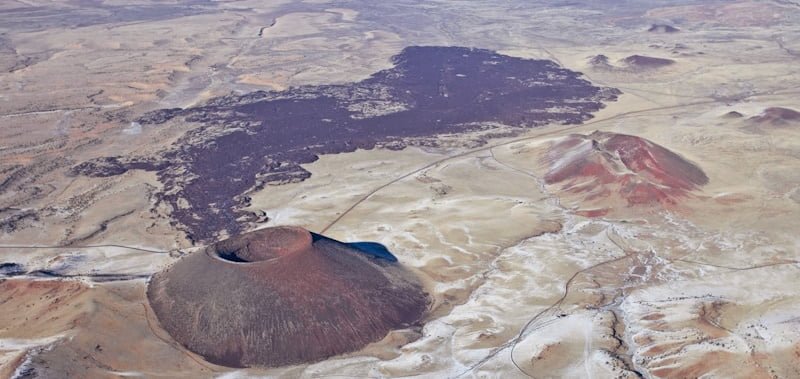
Central and southern Arizona contain more igneous and metamorphic formations. The state has over 1,000 known volcanic vents which erupted 30-40 million years ago. When gas bubbles formed in the cooling rhyolite lava, silica lined the cavities, creating geodes and quartz crystals. Copper deposits were also pushed close enough to the surface, and when copper rich fluid came into contact with alkaline rock, gemstones like turquoise, chrysocolla, and azurite were formed.
You can start your rockhound hunt by looking in local dry washes. These are great spots as these dry washes often originate from mountains and carry down interesting specimens, I find agate, jasper, silica, and sometimes even turquoise in the dry washes!
Arizona Peridot
Arizona is one of the leading peridot producers in the world! I was excited to find this out because typically stones like this come from foreign countries.
Peridot has a beautiful signature green color that comes from iron content in the mineral composition. Valuable peridot has a bright lime green hue without brown or yellow tints. In Arizona, peridot forms deep underground then gets brought closer to the surface by tectonic shifts and volcanic activity. Erosion then frees the gemstones from basalt host rock.
The best places to find Arizona peridot are in alluvial deposits from basalt outcroppings. Ideal conditions allow a steady supply of peridot to weather out of basalt, get transported downhill over time, and accumulate with other mineral gravels. Raw peridot has an olive green color and waxy luster.
Well-known Arizona peridot locations include Peridot Mesa on the San Carlos Apache Reservation, olivine basalt pits in Yavapai County, and volcanic fields near Flagstaff. Private claims or tribal permissions are needed at the San Carlos Apache Reservation.
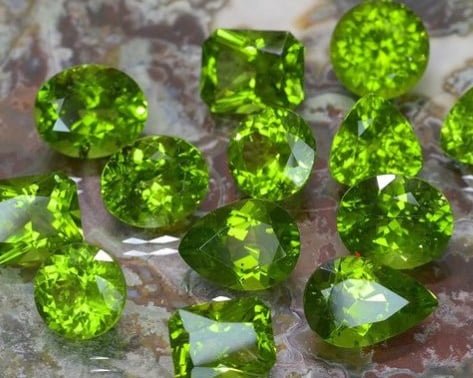

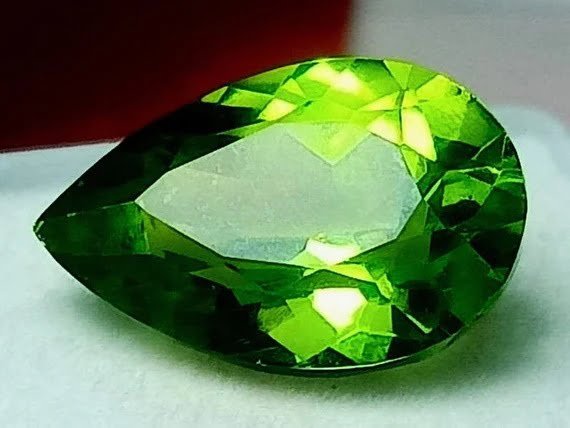
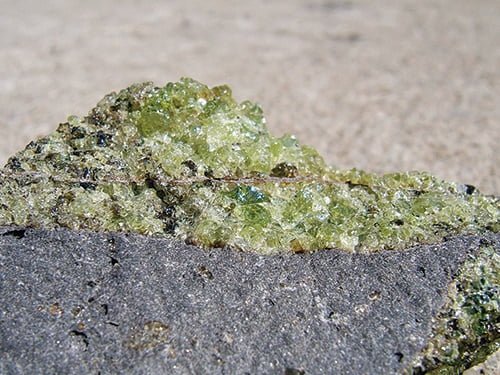
Peridot Gemstone Price
When it comes to peridot gemstones, the price per carat increases exponentially with size and quality. Small peridot stones of a few carats can be found for $10-50 per carat. Medium sized stones in the 5-10 carat range fetch $150-300 per carat for nice specimens with good clarity and color.
For large peridot gems over 10 carats, prices jump to over $1,000 per carat and the finest quality 10+ carat stones can command prices over $3,000 per carat. Top factors that boost peridot values are stones with a vibrant lime-green hue without any brownish or olive secondary tones, high clarity rating with few inclusions, and large carat sizes which are rare for peridot gems. The Mexican and Arizona-sourced peridot are the most prized due to their striking green hues.
Quality gem-grade peridot can also be purchased online from sellers who source authentic stones.
Interested in learning more? Head on over to my comprehensive gem hunter's guide to Arizona Peridot.
Arizona Copper Gemstones
Arizona is well known for its rich copper deposits and world-class copper mines. Many people don't realize that copper is the catalyst for the creation of turquoise, azurite, malachite, chrysocolla, and even gem silica. These mineral specimens are highly valued by gem and rock collectors and it has been my mission to discover gem quality turquoise in my rockhounding endeavors.
How Copper Gemstones Form
Arizona's ancient volcanoes and earth movements have created the perfect environment for copper gemstones to form. All of the faults, fissures, and cavities create spaces for mineral-rich liquids to trickle through. As the solutions ooze through the cracks, the mineral rich fluid solidifies into the highly sought after minerals. It's nature's art in the form of gems! Learn more about this topic in my Arizona copper gemstone geology article.
Rockhounding for Arizona Copper Gemstones
There are literally thousands of old abandoned copper mines in Arizona, all of which have the potential for gemstones. If you want to rockhound for copper gems in Arizona, you can spend some time researching these mines and pick through the tailings.
Copper gems never forms on the surface of the earth, it has to be mined out along with copper ore. So the only chance of you ever finding these gems is to rockhound through the tailings of old mines. I have spent hundreds of hours searching old mines for high quality copper gems, and I have found some interesting specimens.
You will need to make sure the mine is abandoned and not active. Once you verify that, you will need to also verify that the mine is on public property, such as BLM land or national forest. Make sure there isn't an active mining claim too.
I highly recommend looking at my favorite mine mapping system to give you a good start on your turquoise rockhounding adventure. This mapping system is called the Mineral Resource Data System and will bring up all past and present mines in America.
You will have to comb through the mines as you cannot do a search, but only browse throughout the locations on a map.




Arizona Turquoise
Arizona has long been revered as a top source for quality American turquoise. For centuries, indigenous tribes like the Apache, Navajo, and Pueblo mined the turquoise and used the stone in decorative and ritualistic jewelry and totems.
Today, Arizona still produces a diversity of sky blue, emerald green, golden lime, and even a rare lavender-pink turquoise. Many of the copper and turquoise mines have been exhausted of the gemstone which leads to skyrocketing prices.
Because of this, many of these signature turquoise pieces are becoming an excellent investment and a store of wealth.
Kingman Turquoise
The Kingman turquoise mine, located in northwestern Arizona, has a long and storied history. First discovered by Native Americans, the turquoise was prized for both its unique color and spiritual significance. Centuries later in the late 1800s, American prospectors rediscovered the ancient turquoise deposit when prospecting for gold and began commercial mining operations which continue today.
Kingman turquoise is considered some of the world's finest and most valuable turquoise due to its striking "robin's egg" blue shade with a black spiderweb matrix. The distinct color comes from the mine's unusually high copper content. Top-quality Kingman turquoise is also admired in the gem trade for its density and even, consistent color throughout. The turquoise is used in high-end jewelry which comes with a hefty price tag.
In recent decades, the Kingman mine has neared depletion after over a century of intensive mining. The signature blue turquoise with black webbing has become completely depleted, and less valuable turquoise with greener hues is still being mined, but in much smaller amounts.
This increasing scarcity, combined with surging demand worldwide for natural American turquoise, has caused prices for Kingman turquoise to skyrocket. Many experts believe the legendary Kingman turquoise mine will be completely commercially exhausted within the next decade, making this iconic Arizona gem a true rarity.


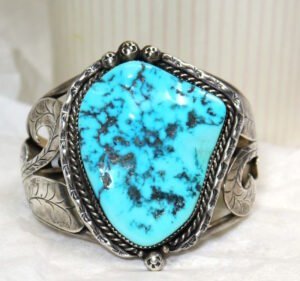
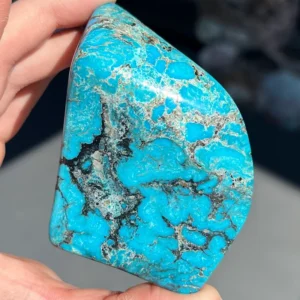
Bisbee Turquoise
Bisbee turquoise (also known as Bisbee Blue) is one of the most valuable and desirable turquoise varieties in the world. The turquoise was actually a byproduct of the Copper Queen Mining Complex, which is located near Bisbee, Arizona. The Copper Queen started mining for copper in the early 1880s and it wasn't long until the miners discovered beautiful vibrant blue turquoise in vein fillings in the local copper ore (1).
The Bisbee mine was a major producer of high quality turquoise until its closure in 1975. During its heyday, the turquoise was hand selected by miners and traded or sold throughout the Southwest. Bisbee turquoise ranges from a rich sky blue to a deep lapis blue and is also known for its unique red-brown or chocolate smoky matrix spider webbing pattern.
Bisbee turquoise jewelry doesn't really sell for under $500 and pieces can reach into $10,000 or more. This is due to the fact that the mine is permanently closed and will never produce the beautiful blue nuggets ever again. It is also private land and is closed to collectors and rockhounds, so the only way to obtain the stone is to shell out the big bucks!
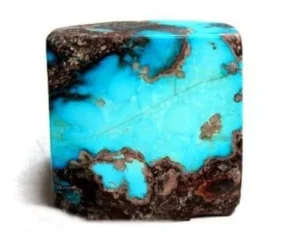

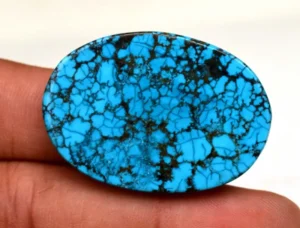

Sleeping Beauty Turquoise
Sleeping Beauty turquoise originates from the Sleeping Beauty Mine which is located outside of Globe, Arizona. Copper mining began there in the 1930s and operated until the 1990s, where many pockets of turquoise were excavated alongside the copper ore (2).
The turquoise formed close to the earth's surface, resulting in a compact, dense stone that is not chalky and easy to polish to a brilliant luster. The stone presents very little to no matrixing, unlike the turquoise from the other mines, so it has a uniform, smooth look that makes Sleeping Beauty Turquoise easy to spot.
Like the many other copper mines, they have been shuttered indefinitely due to many reasons, so the Sleeping Beauty turquoise is in finite supply. Make sure to only buy Sleeping Beauty turquoise from a reputable seller that has a certificate authenticity, as the stone can be easily faked.




Morenci Turquoise
Morenci turquoise originates from the small mining town of Morenci in southeastern Arizona. Unlike the uniform blue hues of Sleeping Beauty or the spiderweb matrix of Bisbee, Morenci turquoise is known for its unique pyrite matrixing. The stone exhibits a vibrant mix of dark blue and green shades swirled with a distinctive goldish-brown pyrite matrix throughout the stone.
The pyrite forms beautiful geometric designs against the vivid turquoise. Morenci turquoise has an exceptional diversity of color from stone to stone, ranging from light sky blues to deep forest greens accented by the dark chocolate and metallic gold veining of pyrite.
This unique color variability and pyrite matrix make Morenci turquoise highly desirable. The turquoise was first mined as a byproduct of Morenci's copper mining operation which closed in 1986. The limited quantity and one-of-a-kind patterns of Morenci turquoise have made it a top choice among collectors and jewelry makers.
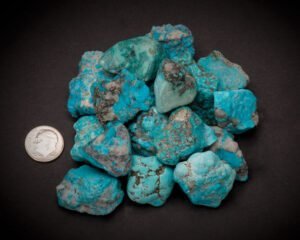


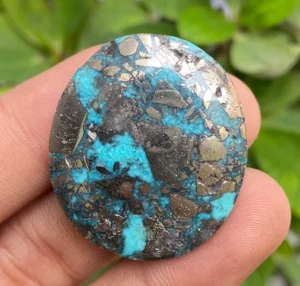
Chrysocolla Stone in Arizona
Chrysocolla is a highly popular gemstone because it has such an attractive vibrant color and the price is a fraction of real turquoise. The reason Chrysocolla is so cheap is because it is relatively soft, rating only a 3.5-4 on the Mohs hardness scale. The stone does require gentler handling and care. High-quality chrysocolla can cost $5-20 per carat, with an average of
The Chrysocolla gemstone forms in many habits:
- Stalactitic Chrysocolla - icicle-shaped crusts and cone-like formations that form when mineral-rich solutions leak through fractures and cavities in the surrounding rock. Stalactitic chrysocolla exhibits banded layers in shades of blue-green.
- Drusy Chrysocolla - forms as thin crusts of tiny, fine crystals lining the interior of geodes and rock cavities.
- Massive Chrysocolla - occurs as dense, homogenous masses without distinct crystal faces. Massive chrysocolla forms when copper solutions fill spaces in the host rock, solidifying into solid blue-green material.
- Chrysocolla in Matrix - forms with particles of host rock still embedded in it, referred to as matrix. Matrix may consist of quartz, limonite, or copper ore minerals partially replaced by chrysocolla.
- Pseudomorphic Chrysocolla - chrysocolla that has replaced other minerals while retaining their original crystal shape. Common pseudomorphs include chrysocolla after azurite and malachite.
- Chrysocolla Stain - In its lowest quality form, chrysocolla appears just as surface stains or films coating the host rock. This occurs when copper solutions trickle through, leaving behind thin layers of blue-green color.
Its pretty easy to find Chrysocolla stain at many of the old copper mines, as I have found many of these specimens. It is much harder to rockhound for the actual good gemmy stuff, but it is definitely out there!
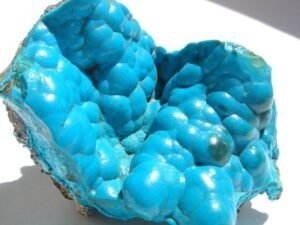
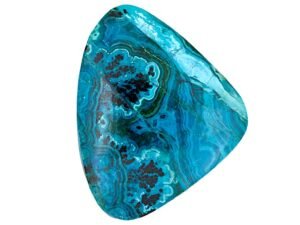

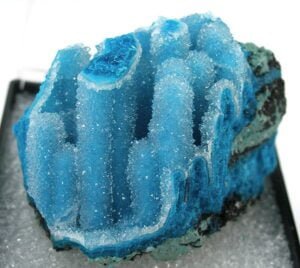
Chrysocolla with Malachite
Chrysocolla and malachite are often found closely associated with one another as they form in similar copper-rich environments. Malachite has deep vibrant green hues which creates a stunning color contrast in combination with Chrysocolla.
The largest chrysocolla-malachite deposits have been found in the copper mines of Arizona and Chile, much of the high quality specimens originated from the Morenci Mine.
Malachite has a little bit stronger hardness than chrysocolla which causes interesting swirls in their formation.
Arizona Malachite Stone
Malachite is a vibrant green copper carbonate mineral, that is a minor ore of copper and forms in oxidized parts of copper deposits. I just love the swirling banded patterns in Malachite stone, and the intense, saturated green color is completely unique to the stone.
Major sources of Malachite come from the Democratic Republic of Congo, Namibia, Australia and the American Southwest. Notable American deposits occur in Arizona, Utah and Nevada.
Because Malachite is a softer stone, the price per carat comes in at about $8 to $15. Malachite is cut into cabochons, beads, carvings, and other ornamental objects.
An interesting fact about malachite is that its name derives from the Greek word for the mallow plant, due to its resemblance to the plant’s green leaves.
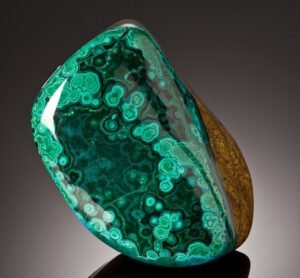
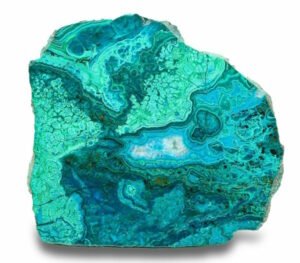


Azurite
Azurite is one of my all time favorites in the copper gemstone group. It has the most deep and vivid of blues that has an intensity that very few other gemstones possess. Azurite forms in short stalactitic spikes, orbicular clusters, and smooth rounded nodules. Light refracting from azurite's small crystal structure amplifies the glow of its blue tones.
Azurite is a copper carbonate, like its green cousin malachite. High quality azurite is only found in a handful of copper mines across the globe. Noteworthy deposits exist in Arizona, Utah, Australia and parts of Europe.
Even though azurite is quite rare, specimens sell between $10-30 per carat. However, since the gem can come in highly complex and unique forms, museum quality pieces can go for thousands of dollars per carat.
Like the rest of the copper gem group, Azurite is relatively soft as 3.5 -4 on the Mohs scale and does not do well as jewelry.
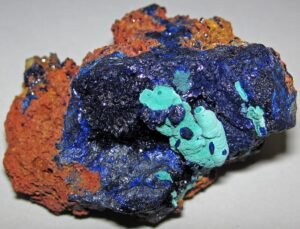


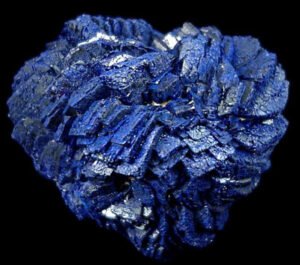
Gem Silica
Last, but not least on the list of copper gemstones, is gem silica. Gem silica occurs when chalcedony comes into contact with the copper rich mineral solution that forms into the crevices of the host rock. This creates a gorgeous translucent blue gem that is highly valued among collectors.
An interesting fact about gem silica is that it was first commercially mined in the late 1890s at the time when copper mining boomed in Arizona. The vivid blue stone was marketed as Chrysocolla Chalcedony. Its popularity rose when Tiffany's started using it in jewelry in the 1920s.
Why Gem Silica is So Expensive
There are several reasons why Gem Silica fetches between $100 to $300 per cut carat:
- Scarcity - Gem SIlica only occurs in a select few mines and not much of the material has been mined or is available for purchase.
- Unique beauty - the translucent blue stone is like no other stone on the planet. It has a wonderful play-of-color and takes on a brilliant polish.
- Hardness - the harder the stone is on the Mohs scale, the rarer it becomes, and the price goes up. Gem silica is a 7 on the scale.
- Unusual formation - copper minerals must come into contact with silica rich groundwater in order to the gemstone to form, which is a highly rare occurrence in nature.
- Collector appeal - strong demand from collectors, lapidary artists, and jewelry makers drive up the price for high quality specimens.
The most highly valued gem silica presents no matrixing, also known as host rock. The more pure the silica, the higher the price becomes. The most significant deposits are located in the Morenci mining district of Arizona and the Magdalena Mountains in New Mexico. Smaller deposits exist in Mexico, Australia, and Zambia.
Personally, I am on a mission to find Gem Silica, and it is not easy. I have been to many copper mines but have yet to find the lucrative gem. I will be sure to make a video if I ever do find a Gem Silica deposit, and you bet that I will be making a claim!
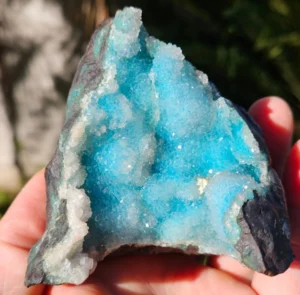

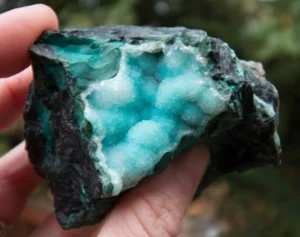

Amethyst in Arizona
Arizona Amethyst, t is special due to its exceptionally high quality and the unique deep purple coloration it exhibits, often with distinctive red and blue flashes that set it apart from amethyst found elsewhere in the world.
Amethyst forms through a geological process deep within the Earth. It occurs when silica-rich fluids cool under the right conditions, in cavities or fractures, and often in volcanic rocks. The presence of iron and other trace minerals during its formation is what gives amethyst its signature color.
In Arizona, the most famous spot for finding amethyst is the Four Peaks Mine. Located in the rugged terrain of the Mazatzal Mountains just outside of Phoenix metro area, this mine is renowned for producing some of the highest quality amethyst in the world. The crystals here are known for their deep purple color, often with a reddish or bluish tint, making them a favorite among collectors and gem enthusiasts.
Visiting the Four Peaks Mine is an adventure and requires planning. Access is limited, with the mine not open to the public for casual visits. However, there are guided tours available through select operators that offer a unique opportunity to explore the mine.
For those interested in purchasing Arizona amethyst without the rugged trip to the mine, there are several options. Many local gem shops and rockhounding stores in Arizona carry amethyst from the Four Peaks Mine. Additionally, gem shows and online retailers often feature Arizona amethyst, providing access to these beautiful stones to people around the world.
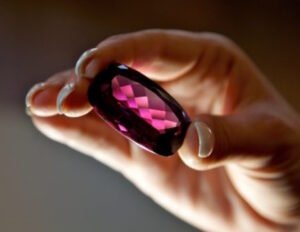

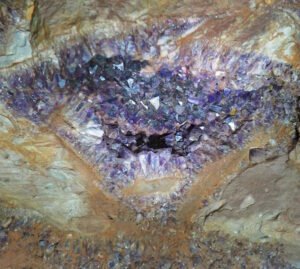
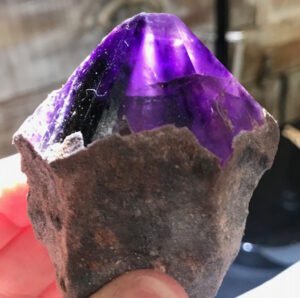
Arizona Fire Agate
Arizona Fire Agate is revered for its mesmerizing play of colors, akin to flames trapped within a gemstone. This unique appearance sets it apart from other Agates, featuring iridescent flashes of red, orange, gold, green, and sometimes even blue and purple, mimicking the vibrant hues of a blazing fire. The phenomenon, known as iridescence, is caused by the stone's natural layering, making each piece one-of-a-kind.
Fire agate forms through an intricate geological process that begins with volcanic activity. As hot water saturated with silica and other minerals percolates through the earth, it fills cavities and cracks within the surrounding rock. Over time, layers of silica and iron oxide settle out of this solution, depositing in the open cavities of the rock. The unique layering of silica and iron oxide creates the agate's fiery colors and iridescence. This process can take millions of years.
In Arizona, fire agate can be found in several locations, with the most notable being in the southeastern part of the state. Areas around Safford, Duncan, and Clifton, especially in the regions of the San Carlos Apache Reservation, are well-known for their fire agate deposits. These locales offer enthusiasts and collectors the chance to discover these gems in their natural setting, nestled within the desert's rugged landscapes.
Fire Agate Known Locations:
- Deer Creek Fire Agate
- Safford Black Hills Rockhounding Site
- Cuesta Fire Agate Mine
- Saddle Mountain
- Round Mountain
If you are looking to purchase Arizona Fire Agate, your best bet is to check out gem shows based in Arizona, like the Tucson Gem Show and The Quartzite Gem Show. You can also find some really nice specimens on Etsy and eBay.
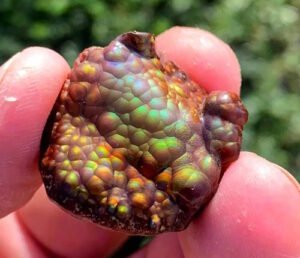
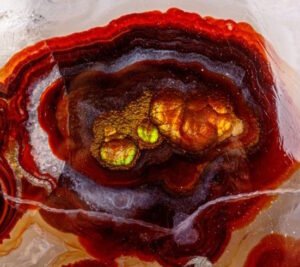


Arizona Anthill Garnet
Arizona Anthill Garnet, also known as Pyrope Garnet, stands out in the gemstone world due to its remarkable, vibrant red coloration that rivals the most exquisite rubies. What makes these garnets especially unique is their incredible clarity and the way they are harvested, which adds an intriguing story to their allure. Unlike other gemstones that are mined from deep within the earth, anthill garnets are found on the surface, thanks to the tireless efforts of ants. These tiny architects bring the garnets to the surface as they excavate their underground homes, leaving a trail of sparkling gems scattered around their anthills.
The formation of anthill garnet occurs deep within the Earth's mantle under extremely high pressure and temperature conditions. When continental plates collide, the intense pressure and heat transform existing minerals into stunning red garnets. Over time, these garnets are brought closer to the surface by geological processes, such as erosion and volcanic activity. Once near the surface, they become part of the desert landscape, eventually uncovered by the ants that bring them to light.
In Arizona, the most prolific area for finding anthill garnets is in the Navajo Nation, near the town of Garnet Ridge, which is aptly named for its abundance of this gemstone. This area is renowned for producing anthill garnets of exceptional quality and color. The unique conditions of the Arizona desert, combined with the geological history of the region, create the perfect environment for these garnets to thrive.




Arizona Petrified Wood
Petrified wood is a fascinating natural phenomenon that can be found in Arizona. Arizona is home to one of the largest and most famous deposits of petrified wood, known as the Petrified Forest National Park.
The petrification process occurs when living trees become buried under sediment and volcanic ash, which prevents them from decaying. Over millions of years, the organic matter in the wood is gradually replaced by minerals, such as quartz, calcite, and iron oxide, creating stunning fossilized logs that retain the original structure and intricate details of the wood.
The petrified wood found in Arizona dates back to the Late Triassic period, around 225 million years ago, when the area was a lush, subtropical environment with towering coniferous trees. The process of petrification was initiated when these ancient trees were buried by volcanic eruptions and sedimentary deposits.
The Petrified Forest National Park is a breathtaking natural wonder that showcases the beauty and diversity of petrified wood. Visitors can marvel at the vibrant colors, ranging from deep reds and purples to blues and greens, created by the different mineral compositions within the petrified logs. The park also features fascinating geological formations, such as the Painted Desert, which offers a stunning contrast to the petrified wood.
The rules for collecting petrified wood in the park are as follows:
- Collection is only allowed in the designated wilderness areas, not in the developed areas of the park.
- Visitors are permitted to collect up to 25 pounds (11.3 kg) of petrified wood fragments per year, plus one larger piece weighing less than 15 pounds (6.8 kg).
- The petrified wood must be loose on the ground and cannot be broken or dug from the ground or petrified logs.
- Tools like shovels, picks, or saws are not allowed for collecting.
Arizona's petrified wood is not only a remarkable natural attraction but also a valuable scientific resource. Researchers have studied these fossilized logs to gain insights into the plant life, climate, and environmental conditions that existed millions of years ago, providing a window into the prehistoric past of our planet.


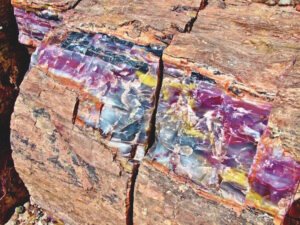
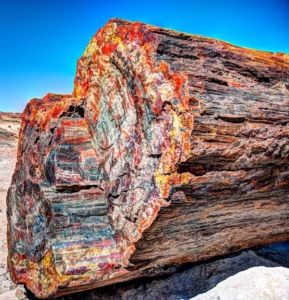
Conclusion
At the end of the day, rockhounding in Arizona is an awesome adventure that can be rewarding if you know where to look. You get to explore some truly wild and beautiful landscapes while searching for magnificent gemstones and minerals.
Whether you're trekking through the desert chasing fire agates, investigating old copper mines for turquoise, or hunting down petrified wood in the Painted Desert - there's just something special about finding these natural treasures yourself.

